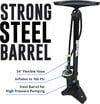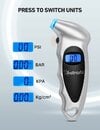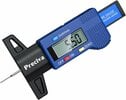Hi,
I've noticed that the tire pressure on all four of my tires are low (37). I also remember that I have to pay for air at most stations in my area.
So, I'd like to purchase an air compressor. Should I look for one that I can keep in my model Y at all times or should I focus on one that I can keep at home? Is there a good one out there that isn't too big and heavy that would be recommended?
Also, I understand that the best time to check tire pressure is when the tires are cold (i.e. morning). But after driving to a station, would that go up a bit and I might not get an accurate gauge of the tire (for example if they go up to 38,39 while driving). Should I take the tires getting warm and pressure possibly being higher into account?
Thanks in advance for any help.
I've noticed that the tire pressure on all four of my tires are low (37). I also remember that I have to pay for air at most stations in my area.
So, I'd like to purchase an air compressor. Should I look for one that I can keep in my model Y at all times or should I focus on one that I can keep at home? Is there a good one out there that isn't too big and heavy that would be recommended?
Also, I understand that the best time to check tire pressure is when the tires are cold (i.e. morning). But after driving to a station, would that go up a bit and I might not get an accurate gauge of the tire (for example if they go up to 38,39 while driving). Should I take the tires getting warm and pressure possibly being higher into account?
Thanks in advance for any help.





